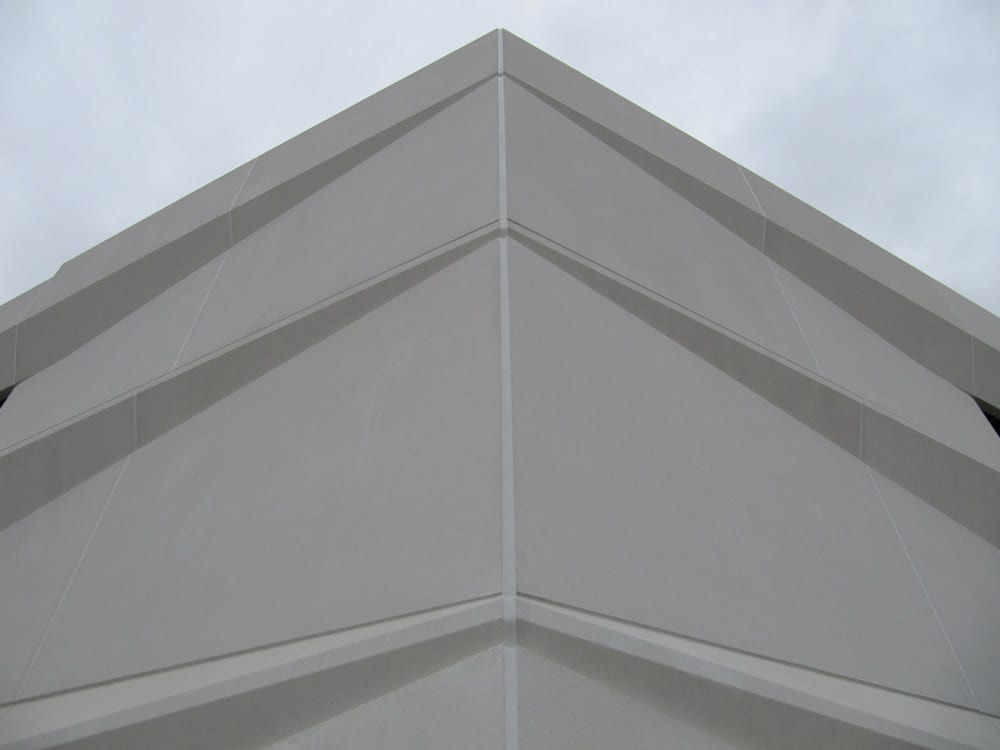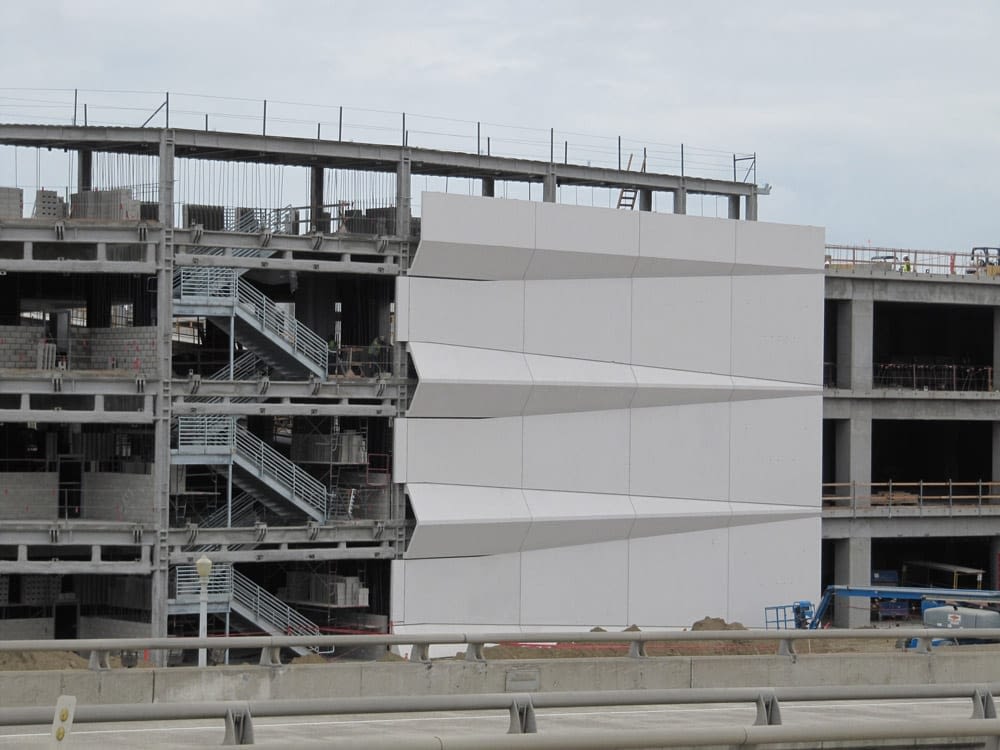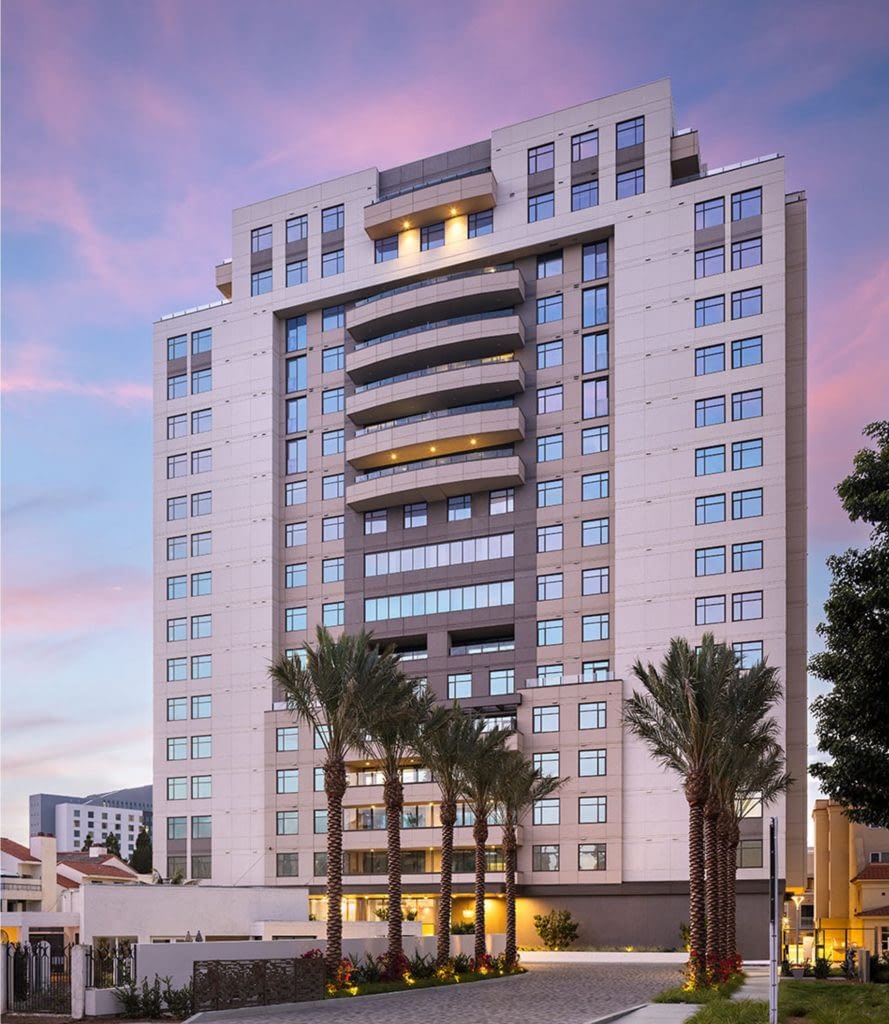The San Diego International Airport Rental Car Center (ConRac) project is one of the most high profile buildings that has been added to the San Diego skyline in a number of years. For quite some time the Airport Authority has wanted to construct a central hub for its rental car agencies that service the airport and its customers. Its primary goal is to reduce shuttle bus traffic near the airport and the surrounding area, as well as to improve the travel experience for those utilizing the airport. However, the rigorous community scrutiny and political climate meant that any such structure would have to be remarkable not only in its function but also in its architectural form. During our kick-off meeting with the project team the Airport Authority specifically told us that the success of this project was resting squarely on Clark Pacific’s shoulders. They emphasized that the entire city would be watching our progress and judging the finished product, as a project of this magnitude has not previously been attempted in San Diego. CP began its design work on this challenging project in January 2014. We completed our hoisting activities in June 2015 and are now in the final stages of completing the field patching for the project. The substantial completion milestone for the project is set for October 2015, and the Rental Car Center is scheduled to open for business in January 2016. The general contractor on the project is an Austin|Sundt joint venture, and the design architect is Demattei Wong.
Clark Pacific was contracted to provide approximately 210,000SF of high-quality white architectural precast concrete to clad the massive four story CIP parking structure. The structure itself contains over 2 million square feet of space that will house more than twelve (12) rental car agencies and their fleets of vehicles to service the San Diego International Airport. The project consisted of nearly 850 erectable panels, with 300 plant assemblies (grey crash-wall pieces) required in the process; equating to nearly 1150 distinct pieces that had to be cast for the project. The panel shapes and architectural profiles on the project were very complex and large in scale. The typical spandrel panels are nearly nine feet tall, have a white architectural finish and a triangular cross-sectional shape. Most of these spandrels also received grey crash-wall panels that were plant-assembled before making the trip to the jobsite. The majority of the precast for the project was fabricated in Fontana; however, West Sacramento produced the helix spandrels as well as some of the parapet panels. There were also approximately eighty infill column cover panels that had a “diamond” shape and were attached top and bottom to the adjacent spandrel panels. Vehicles will enter and exit the parking structure by way of two helical drive ramps that service all four floors of the building. These CIP drive ramps are also clad in our white architectural precast spandrel panels. The panels have a cross section similar to those on the main building; however, these spandrels have to follow the trajectory of the ramp’s corkscrew shape. Thus, the helix spandrels have a triangular section that follows a radius with a “twist” built into the profile in order to follow the ramp as it climbs from floor to floor. Even though they were very complicated to design, fabricate, and install, the helix panels were not the most complex panels on the project. That distinction belongs to the shaped infill wall panels that clad the various stair towers and building corners that occur all around the building’s perimeter. These panels are trapezoidal in shape and have vertical and horizontal ribs at the back of panel in order to connect to the spandrels above and below. This panel type proved to be extremely difficult to deal with in each phase of our work, from design to installation. The intricate shapes and architectural features present on this building make it truly unique.
This project proved to be extremely challenging in each and every phase of our work. Our engineering effort began in January 2014, and the GC’s schedule had a break-neck pace that we had to keep up with. The GC needed our CIP embeds on-site within a couple months of us first starting work on the project. Considering the scale and complexity of the project, this was the first of many sizeable hurdles that we had to overcome. Even though the project schedule was moving quickly from a field CIP perspective, the architect’s drawings and designs for the project were still quite schematic at the point when we joined the team. Thus, we had to immerse ourselves in the project immediately and play an instrumental role in defining the overall design of the architectural features and details for the project. Due to the massive size of the building and the speed at which the structure was being constructed by the GC, CP was forced to tailor our design approach, breaking the building into distinct portions to be designed on a priority basis. Of the total number of panels required for the project, a very high percentage of them were “make 1’s” due to the complexity of the overall building envelope and its intricate details.
3D modelling was utilized by CP at various stages of the project. Mike Putich, Martin Scheiber, Humberto Bravo and Eric Burton lent their combined modeling expertise to our engineering team to facilitate this process. In particular it was used to model the formwork, panel and reinforcing drawings required for the complex helical ramp spandrels. Our engineering team was “behind right out of the gate” on this project due to the tight schedule required by the GC. Ryan Reinhard, John Langeloh, Gabe Eguia, Eric Bardet, Jorge Torres, Matt Stetkevich, Grant Guerrieri, Bob Chrenowski, April Buchberger and others played important roles in the massive engineering effort required for this project over the past year and a half. Even though there were numerous contentious issues that arose between CP and the project team throughout the course of the project, our Engineering team remained focused on navigating our way through this challenging project to its ultimate completion.
The production of the precast panels for the San Diego ConRac project proved to be extremely difficult. The formwork, panel shapes and rebar cages on the project were very complex, large and numerous. That was further compounded by the fact that the Fontana plant was experiencing one of the busiest periods in its long history. Nineteen forms were required in order to produce the panels for the project between the Fontana and West Sacramento plants. We began casting in October 2014 and finished casting eight months later in June 2015. The intricate panel shapes on the project required equally involved reinforcing and formwork systems in order to produce them. Some of the embeds required for our panelized system looked more like connections for structural members than one would expect to see for architectural panels. Bruce Lore, Eugene Huerta, Brad Williams and their personnel in the Fontana plant worked tirelessly to execute the fabrication and delivery of the panels needed for this challenging project. Dan Hill and some of his crew members from the Woodland plant also spent a considerable amount of time in Fontana helping execute the difficult shaped wall panel castings. Additionally, Sergey Dzhangetov, Steve Voss and their team in the West Sacramento plant stepped in at a critical point in the project to produce and ship the complex helical spandrels and parapet shapes. Against unfavorable odds, our production team in Fontana along with some valuable help from West Sacramento Production showed great resolve and worked through this difficult project until the job was finished.
The field effort required to install our scope of work for this project was just as challenging as that needed in the design and fabrication phases. From planning and coordinating the logistics of our work on the massive and busy jobsite to the implementation of our installation process, our field activities were in high gear from December 2014 through June 2015. In order to meet the GC’s project schedule CP had to employ two erection crews and two cranes simultaneously for nearly half of our time spent in the field. This was in addition to multiple other crews that were performing on-going layout, shakeout, align and weld work in various parts of the building simultaneously. The intricate fit-up with the CIP and steel structures as well as within our own panel system forced our field personnel to exercise great care while installing these large panels, many of which weighed in excess of 30,000lbs. Engineering had to design a large, motorized flying jib, dubbed “The Bumble Bee” in order to hoist and fit the shaped infill wall panels in to place between spandrels already installed above and below. Due to their shape and configuration, many of our panels had to be picked using inserts located on surfaces that would ultimately be exposed to view. Thus, our field patchers have been challenged with the task of repairing these pick points in order to provide the high-quality façade that is expected by the Airport Authority at the project’s completion. Donavan Codara was CP’s field foreman tasked with orchestrating our work on-site in San Diego. He and his large field crew executed the extremely labor-intensive and complicated task of installing our work on this project. Geronimo Roman and his team of masons implemented the intricate field patching required to bring our final product to the high level of quality that is now evident on the building’s facades. Our entire field team has risen to the challenge and executed this extremely difficult project with a high level of commitment and quality.
It is not an exaggeration to state that Clark Pacific’s Engineering, Production and Field teams were pushed to their limits repeatedly during the course of our collective work on this project. We found ourselves in a difficult position with respect to the project schedule from the earliest stages of our involvement with the project. Further exacerbating that was the fact that our company as a whole was already extremely busy with other work while the ConRac project progressed. Thus, resources available in engineering, production, the field and outside vendors were extremely limited. The complicated architectural features, immense scale and fast-paced schedule challenged the Clark Pacific team in many ways throughout the course of our work on this unique project. That being said, the entire Clark Pacific organization exercised a high level of commitment and remained focused on working together as a team to execute this landmark project. In the SDIA Rental Car Center, Clark Pacific has produced a beautiful edifice that we can be proud of; one that has already been and will continue to be recognized by others in our industry.




